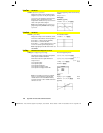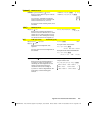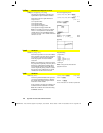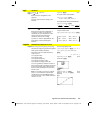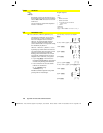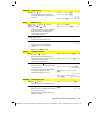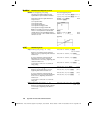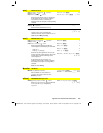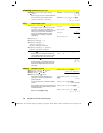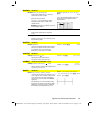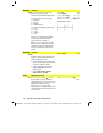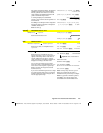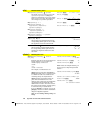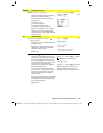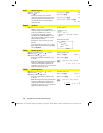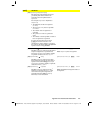
470 Appendix A: Functions and Instructions
8992APPA.DOC TI-89 / TI-92 Plus: Appendix A (US English) Susan Gullord Revised: 02/23/01 1:48 PM Printed: 02/23/01 2:21 PM Page 470 of 132
mRowAdd()
MATH/Matrix/Row ops menu
mRowAdd(
expression
,
matrix1
,
index1
,
index2
)
⇒
matrix
Returns a copy of
matrix1
with each element
in row
index2
of
matrix1
replaced with:
expression
× row
index1
+ row
index2
mRowAdd(
ë
3,[1,2;3,4],1,2)
¸
[
1
2
0 L2
]
mRowAdd(n,[a,b;c,d],1,2)
¸
[
a
a
ø
n+c
b
b
ø
n+d
]
nCr()
MATH/Probability menu
nCr(
expression1
,
expression2
)
⇒
expression
For integer
expression1
and
expression2
with
expression1
‚
expression2
‚
0,
nCr()
is the
number of combinations of
expression1
things
taken
expression2
at a time. (This is also
known as a binomial coefficient.) Both
arguments can be integers or symbolic
expressions.
nCr(
expression,
0
)
⇒
1
nCr(
expression, negInteger
)
⇒
0
nCr(
expression, posInteger
)
⇒
expression
ø
(
expression
ì
1)
...
(
expression
ì
posInteger
+1)/
posInteger
!
nCr(
expression, nonInteger
)
⇒
expression
!/
((
expression
ì
nonInteger
)!
ø
nonInteger
!)
nCr(z,3)
z
ø
(z
ì
2)
ø
(z
ì
1)
6
ans(1)|z=5 10
nCr(z,c)
z!
c!(z
ì
c)!
ans(1)/nPr(z,c)
1
c!
nCr(
list1
,
list2
)
⇒
list
Returns a list of combinations based on the
corresponding element pairs in the two lists.
The arguments must be the same size list.
nCr({5,4,3},{2,4,2})
¸
{10 1 3}
nCr(
matrix1
,
matrix2
)
⇒
matrix
Returns a matrix of combinations based on
the corresponding element pairs in the two
matrices. The arguments must be the same
size matrix.
nCr([6,5;4,3],[2,2;2,2])
¸
[
15 10
6 3
]
nDeriv()
MATH/Calculus menu
nDeriv(
expression1
,
var
[
,
h
]
)
⇒
expression
nDeriv(
expression1
,
var, list
)
⇒
list
nDeriv(
list
,
var
[
,
h
]
)
⇒
list
nDeriv(
matrix
,
var
[
,
h
]
)
⇒
matrix
Returns the numerical derivative as an
expression. Uses the central difference
quotient formula.
h
is the step value. If
h
is omitted, it defaults
to 0.001.
When using
list
or
matrix
, the operation gets
mapped across the values in the list or across
the matrix elements.
Note: See also
avgRC()
and d
()
.
nDeriv(cos(x),x,h)
¸
ë
(
cos
(
x
ì
h)
ì
cos
(
x+
h))
2
ø
h
limit(nDeriv(cos(x),x,h),h,0)
¸
ë
sin(x)
nDeriv(x^3,x,0.01)
¸
3.
ø
(
x
ñ
+.000033
)
nDeriv(cos(x),x)|x=p/2
¸
ë
1
.
nDeriv(x^2,x,{.01,.1})
¸
{
2.
ø
x 2.
ø
x
}



